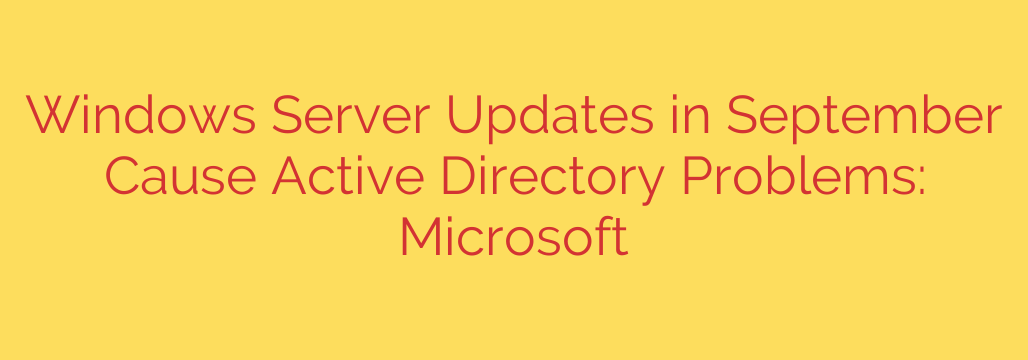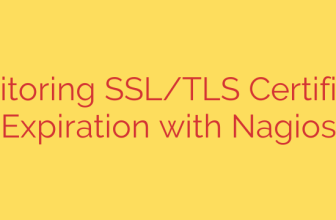
Troubleshooting Active Directory Failures After Recent Windows Server Updates
If your organization is experiencing sudden authentication errors, Group Policy failures, or other unusual Active Directory behavior, the culprit may be a recent Windows Server update. Microsoft has officially acknowledged that cumulative updates released in September 2022 are causing significant issues for some domain controllers.
These problems can manifest in several disruptive ways, leaving IT administrators scrambling for a solution. Understanding the cause, the affected systems, and the official fix is critical to restoring normal operations and ensuring network stability.
What Are the Symptoms of the Update Issue?
After installing the September 2022 cumulative updates, administrators may notice a range of problems directly linked to Active Directory authentication. The issues stem from how these updates handle authentication policies and ticket processing.
Key reported problems include:
- Group Policy Failures: GPOs may fail to update on client machines, preventing new policies from being applied.
- Authentication Errors: Users and services may be unable to authenticate with the domain. This can impact logins, application access, and network services.
- File Share Access Problems: Users might be unable to access network file shares that rely on Active Directory authentication.
- Single Sign-On (SSO) Breakdowns: Applications and services that depend on SSO may fail for all users.
These issues are not isolated and can impact the entire network infrastructure, as nearly all Windows services rely on a healthy and responsive Active Directory environment.
Which Windows Server Versions Are Affected?
The problem impacts domain controllers running a wide array of modern Windows Server operating systems. If you have installed the September cumulative updates, you should check your systems for these issues.
The specific updates and affected operating systems are:
- Windows Server 2022: KB5017315
- Windows Server 2019: KB5017316
- Windows Server 2016: KB5017305
- Windows Server 2012 R2: KB5017367
- Windows Server 2008 R2 SP1: KB5017365
Additionally, systems running Windows 11 (KB5017328) and Windows 10 (KB5017308) that act in a domain controller capacity could also be impacted.
The Official Solution: Install the Out-of-Band (OOB) Updates
To address these critical problems, Microsoft has released emergency out-of-band (OOB) updates. These patches are designed specifically to correct the authentication flaws introduced by the September updates. This is the recommended and safest path to resolution.
These OOB updates will not be delivered through the standard Windows Update process. Administrators must manually import them into Windows Server Update Services (WSUS) or download them directly from the Microsoft Update Catalog.
The required OOB updates are:
- Windows Server 2022: KB5017315 (Note: This is the revised version of the original update)
- Windows Server 2019: KB5019274
- Windows Server 2016: KB5019273
- Windows Server 2012 R2: KB5019276
Actionable Tip: The most reliable method is to search for these specific KB numbers in the Microsoft Update Catalog, download the correct package for your server’s architecture, and install it on all affected domain controllers. A reboot will be required after installation.
Temporary Workaround (If You Cannot Patch Immediately)
If you are unable to install the OOB updates right away, a temporary workaround is available. This involves modifying a registry key to disable the feature causing the conflict.
Important Security Note: Modifying the system registry can be risky. Always back up the registry before making any changes. This should only be considered a temporary measure until you can apply the official patch.
- Open the Registry Editor (regedit.exe) on the affected domain controller.
- Navigate to the following key:
HKEY_LOCAL_MACHINE\SYSTEM\CurrentControlSet\Services\Kdc - Find the value named KrbtgtFullPacSignature.
- Change its value from the default of
3to0.
Setting this value to 0 makes the Key Distribution Center (KDC) ignore the problematic signature validation, which can restore authentication services. However, this may have security implications, and installing the official OOB update is the strongly recommended permanent solution.
By staying informed and taking swift action, administrators can mitigate the impact of these update-related issues and ensure their Active Directory environment remains secure and functional.
Source: https://www.bleepingcomputer.com/news/microsoft/microsoft-september-2025-windows-server-updates-cause-active-directory-issues/








